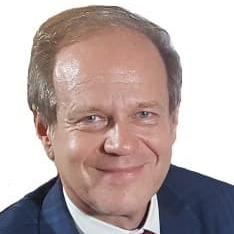Innovative Laser Medicine and Traditional Acupuncture Therapy
A special issue of Medicines (ISSN 2305-6320).
Deadline for manuscript submissions: closed (31 May 2019) | Viewed by 43748
Special Issue Editor
Interests: photobiomodulation; laser therapy; laser acupuncture; laser medicine; evidence-based complementary medicine
Special Issues, Collections and Topics in MDPI journals
Special Issue Information
Dear Colleagues,
Laser medicine has made tremendous progress in recent years and has become an important part of the range of methods of modern medical procedures. It is, above all, the innovative procedures in the field of complementary medicine, which have contributed significantly. The technical parameters for laser prevention, laser diagnostics and laser therapy are well-studied in some areas, although it must be noted critically that much basic research will still be necessary to be able to provide more areas of meaningful medical therapy with optical methods. Only on the term “laser therapy”, there are currently over 80,000 referenced publications worldwide and the number is constantly increasing.
This special issue is intended to provide a scientific connection between complementary medicine, laser medicine and especially acupuncture and thus make an important bridge. We, the Medicines team look forward to your manuscripts, which should also be published in book form if there are sufficient manuscripts with good scientific quality. I am sure that your manuscript will receive the appropriate attention it deserves.
Prof. Dr. Gerhard Litscher
Guest Editor
Manuscript Submission Information
Manuscripts should be submitted online at www.mdpi.com by registering and logging in to this website. Once you are registered, click here to go to the submission form. Manuscripts can be submitted until the deadline. All submissions that pass pre-check are peer-reviewed. Accepted papers will be published continuously in the journal (as soon as accepted) and will be listed together on the special issue website. Research articles, review articles as well as short communications are invited. For planned papers, a title and short abstract (about 100 words) can be sent to the Editorial Office for announcement on this website.
Submitted manuscripts should not have been published previously, nor be under consideration for publication elsewhere (except conference proceedings papers). All manuscripts are thoroughly refereed through a single-blind peer-review process. A guide for authors and other relevant information for submission of manuscripts is available on the Instructions for Authors page. Medicines is an international peer-reviewed open access monthly journal published by MDPI.
Please visit the Instructions for Authors page before submitting a manuscript. The Article Processing Charge (APC) for publication in this open access journal is 1400 CHF (Swiss Francs). Submitted papers should be well formatted and use good English. Authors may use MDPI's English editing service prior to publication or during author revisions.
Keywords
- laser medicine
- complementary medicine
- acupuncture
- laser acupuncture
- laser therapy
- laser diagnostics
- preventive medicine




